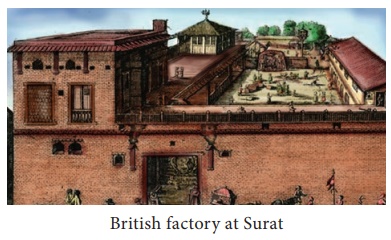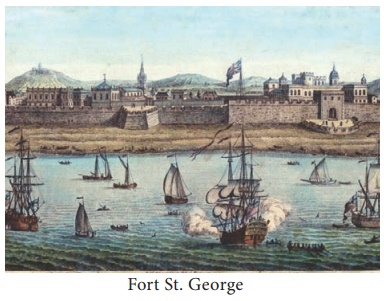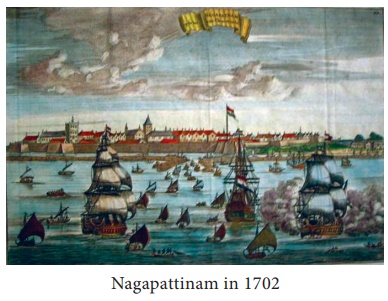The Coming of the Europeans - Political Affairs | 11th History : Chapter 16 : The Coming of the Europeans
Chapter: 11th History : Chapter 16 : The Coming of the Europeans
Political Affairs
Political Affairs
1600-1650: The Mughal Empire
This was the period when the Mughal empire was at
the peak of its power. The Europeans were quite aware of the wealth and power
of the Mughals, and English poets even wrote about the fabulous “wealth of
India”. Travellers from all parts of Europe visited India regularly during the
sixteenth and seventeenth centuries. The journals of their travels present a
detailed contemporary account of the empire and society in India.
By 1600 Akbar had achieved his imperial dream and
extended the frontiers of the Mughal empire through his conquests in Rajasthan
and Gujarat. Gujarat was conquered in 1573, and this gave the Mughal empire
valuable access to the port of Surat, which was the gateway to west Asia and
Europe. Besides trade, the ships carrying pilgrims to Mecca left from Surat.
The importance of Surat to the Mughals can be appreciated from the fact that
Surat had two governors, one the governor of the city, and the other, the
governor of the castle which had been built on the river Tapti to protect the
city. The governor of the city was in charge of civilian affairs and collecting
the revenues from customs duties.

Akbar had also tried to extend his empire in the
east beyond Bihar by conquering Bengal. But Bengal was not really integrated
into the empire until nearly three decades later, when it became one of the
provinces (subah) under Jahangir.
Under Akbar, the revenue system of the empire had been revamped by Todar Mal so
that a unified system of governance and revenue collection could function
throughout the empire. At his death, therefore, Akbar left a powerful,
economically prosperous and well-administered empire.
The Dutch, followed by the English, arrived in
Surat in the early years of the 1600s to begin their trading activities. The
Mughal governor permitted them to trade, and to set up their “factories” (as
the business premises of the European traders which also functioned as
warehouses were termed), but they were not allowed to have any territorial
authority over any part of the city. This frustrated their ambitions to follow
the Portuguese model.
The English acquired the islands of Bombay in 1668,
and set up their headquarters in Bombay in 1687. Their primary objective was to
develop Bombay as an alternate base for their operations.
But Surat under the protection of the Mughal state
still remained the preferred centre of commercial activity for the merchants.
1600-1650: South India after Vijayanagar
South India, especially the Tamil region, presented
a sharp contrast to the centralized stability of the Mughal empire in these
decades. Politically the region was fragmented and unsettled. Under Vijayanagar
rule, three Nayak kingdoms had been set up in the Tamil region: in Madurai,
Thanjavur and Senji. The objective was to provide financial and manpower
resources to the empire. After the defeat of Vijayanagar in 1565 in the Battle
of Talikota by the combined forces of the rulers of Ahmednagar, Bijapur and
Golkonda, the central authority of the once dominant kingdom became very weak.
The Nayak kingdoms became virtually autonomous, though they made a ritualistic
acknowledgment of the authority of the Vijayanagar emperor. In addition to the
larger Nayak kingdoms, several local chiefs also controlled some parts of the
region. The most notable of them was probably the Setupati of Ramanathapuram,
who was also keen to assert his independence. Between 1590 and 1649 the region
witnessed several military conflicts arising out of these

Madurai and
Thanjavur fought several times to establish their superiority. There were also
rebellions against the Vijayanagar emperor. Besides these on-going conflicts,
Golkonda invaded the Coromandel in 1646 and annexed the area between Pulicat
and San Thome, which also changed the political scenario in the region.
The Dutch and the English were able to acquire
territorial rights on the east coast during these years. They realized that
they needed a base on the Coromandel coast to access the piece goods needed for
trading with the spice-producing islands of Indonesia. The Dutch had
successfully negotiated to acquire Pulicat (Palaverkadu) from the Nayak of
Senji and constructed a fort there. The English got a piece of land further
south from the local chief, Damarla Venkatadri Nayak on which they built Fort
St. George in 1639. Thus an English settlement came up which eventually grew
into Chennai (Madras), the capital of the Madras Presidency.
1650-1700: The Mughal Empire
Emperor Aurangzeb began an ambitious programme of
extending his empire south to the Deccan, and the kingdoms of Ahmednagar,
Bijapur and Golkonda were conquered in the 1680s. This extended the Mughal
control of the Deccan as far south as Chennai. But the overextended Mughal
empire soon began to reveal its inherent weakness. This became most apparent
when the Marathas, under Shivaji, began to grow in power and military strength.
They attacked Surat with impunity in 1664, though it was soon abandoned. But their
second raid in 1670 devastated Surat and its trade took several years to
recover. This seriously challenged the claim of Mughal invincibility and it
sounded the beginning of the gradual disintegration of the Mughal empire.
In the 1660s, after the attack on Surat, Shivaji
turned his attention to south India, and defeated the Nayaks of Senji and
Thanjavur. Though Senji was conquered by the Mughals a few years later,
Thanjavur survived as a Maratha-ruled state. The Maratha kings, with their
inclusive policy of assimilating Tamil intellectual and cultural traditions,
made Thanjavur the cultural capital of the Tamil region.
1700-1750: The Mughal Empire and the Successor States
Aurangzeb, the last of the “great Mughals”, died in
1707. One of the major developments following his death was the establishment
of what have been called ‘successor states’. Mughal viceroys in various parts
of the country Oudh, Bengal, Hyderabad and the Carnatic set themselves up as
independent rulers. The English and the Dutch had understood this vulnerability
of the Mughal state.
In Bengal and the Carnatic, the Nawabs had borrowed
heavily from the English, and assigned vast tracts of land to them so that the
English could collect the land revenue as repayment for the loans. This marks the
beginning of British rule as revenue collectors.
The name Carnatic originally refered
to the region occupied by the Kannada-speaking people. In the eighteenth
century it included the region lying between the Eastern Ghats and the Western
Ghats, in the modern Indian states of Tamil Nadu, Karnataka, and southern
Andhra Pradesh. The Nawab of Arcot controlled this region.
By this time the Dutch had given up Pulicat and
moved their headquarters further south to Nagapattinam. They had decided to
shift their focus to the spice-producing islands of Indonesia and established
their capital at Jakarta (Batavia). Chennai, in the meantime, had grown into a
prosperous town. The English, after many years of struggle, became a power to
reckon with in the region. Surat continued to suffer due to the uncertain
political conditions, and by 1750, the local merchants had begun to declare
themselves to be “under the protection” of the Dutch or the English in order to
feel more secure. Bombay therefore became a viable alternative as a trade
centre, attracting merchants from Surat and other parts of Gujarat.

Related Topics